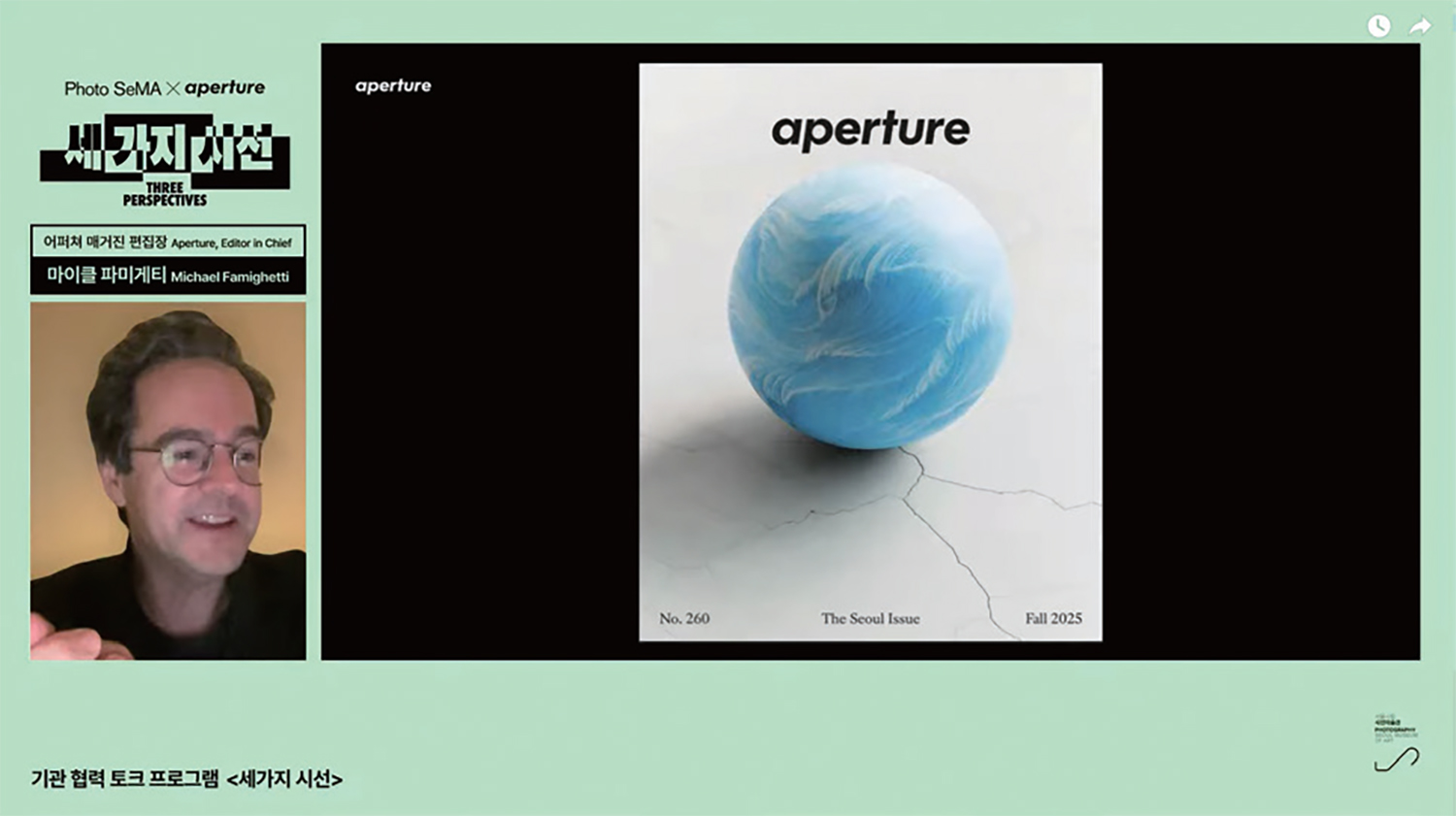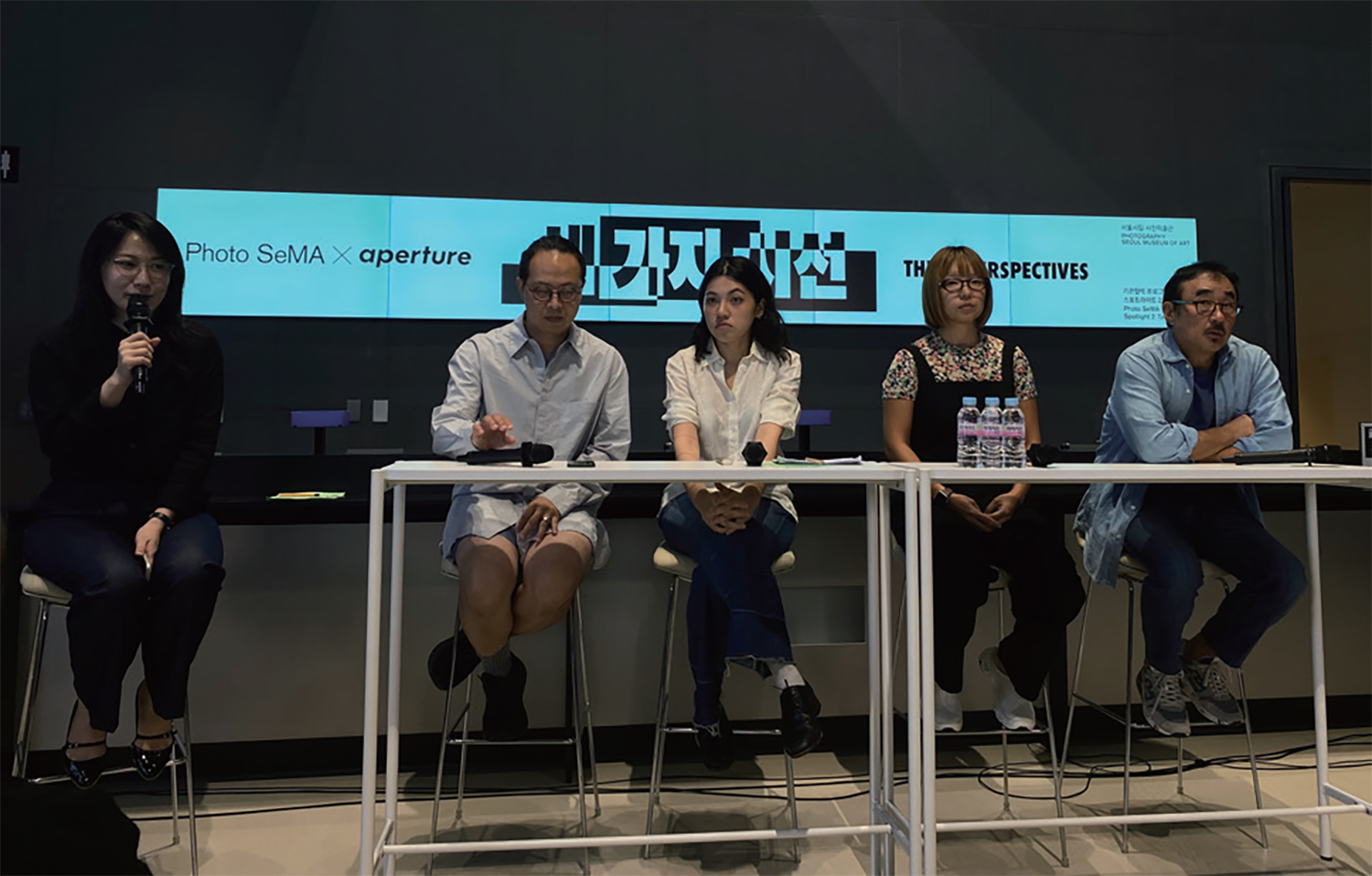SPACE November 2025 (No. 696)

Michael Famighetti joined the talk programme via Zoom. Screenshots from Youtube
On Sep. 8, the Photography Seoul Museum of Art hosted ‘Photo SeMA × Aperture: Three Perspectives’, a programme of talks that explored new photographic discourse focused on Seoul. The event was timed with the publication of Aperture magazine’s 260th issue, ‘The Seoul Issue’, and featured Aperture editor-inchief Michael Famighetti, along with photographers whose works were featured in the issue, such as photographers Oh Heinkuh, Hwang Yezoi, and Ahn Chorong, as well as guest editors Son Hyunjung (curator, Photo SeMA) and Park Jaeyong (writer).
Joining online via Zoom, Michael Famighetti introduced Aperture’s editorial direction and the context behind ‘The Seoul Issue’. Since launching its Cities series in 2014 with ‘The São Paulo Issue’, Aperture has published city-focused editions in collaboration with local guest editors, aiming to reflect each city’s cultural context while featuring contemporary photography, interviews, research, and curatorial content. The decision to spotlight Seoul, Famighetti explained, stemmed from the belief that the city represents one of the most significant contemporary scenes for both modern photography and photographic history—marked by the post-martial law protests, the rise of a sophisticated consumer culture, and the grand spectacle of late capitalism.

from left Son Hyunjung, Park Jaeyong, Hwang Yezoi, An Chorong, Oh Heinkuhn. ©Kim Hyerin
Following Michael’s speech, participating photographers, presented their work and gave a sense of their artistic perspectives. These artists have focused on Seoul, Korea, where diverse visual images and political · social contexts intersect in various ways. Oh Heinkuhn discussed his long-standing exploration of social identity and the frontality of the human face, spanning from his series Itaewon Story (1993 – 1994) to his ongoing series Left Face (2013 – ). He compared his approach to film casting—rather than creating a gaze, he seeks out subjects who already embody a specific gaze. Without using a viewfinder, he photographs his subjects through direct eye contact, visualising the responses of his subjects to his eye contact. Through this method, Oh has built a collective portrait of social groups that hold representative roles in Korean society.
Hwang Yezoi captures scenes of protests around the National Assembly and Namtaeryeong following the declaration of martial law through her series Flashback Diary (2024 – 2025), exploring Korean society’s layered sense of time. Her photographs interweave private, everyday moments with tense, historical ones within a single roll of film—revealing temporal dissonance and layered memories across Korean society. By bringing together personal experience and collective memory, Hwang exposes the complex cross-sections of contemporary Korean life. Ahn Chorong described her intuitive process of photographing daily life, then curating and sequencing the images. Through this process the photographs gain new context and sequence. Her installations – with approaches such as displaying photographs under glass panels or on table surfaces – transform images from flat representations into tactile experiences. She seeks to expand how photography can be read and encountered beyond the two-dimensional plane.
In the subsequent discussion, Son Hyunjung, Park Jaeyong, Oh Heinkuhn, Hwang Yezoi, and An Chorong engaged in dialogues about the role of photography in contemporary society, the shifting authority of print media, and the dynamics that inform how Korea is perceived through external perspectives. ‘The Seoul Issue’ also includes Andrew Russeth’s essay ‘Space Is the Place’, which introduces SPACE. The interdisciplinary Korean arts journal featured in its first issue aerial photographs of Seoul by photographer Limb Eungsik. Russeth highlights SPACE’s historic role in documenting the evolution of Korea’s urban landscape and architectural identity at critical turning points in the nation’s modernisation.





